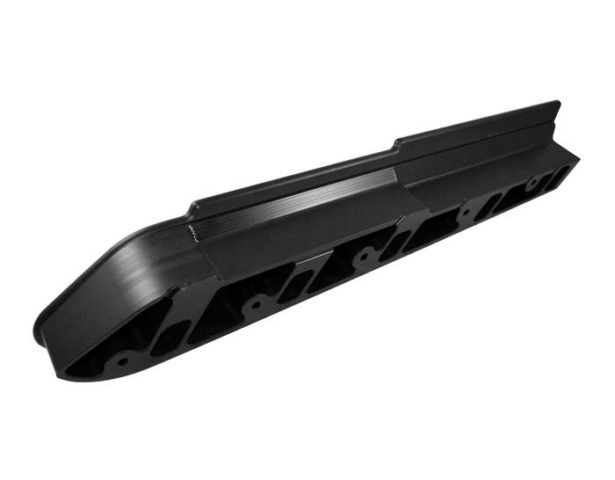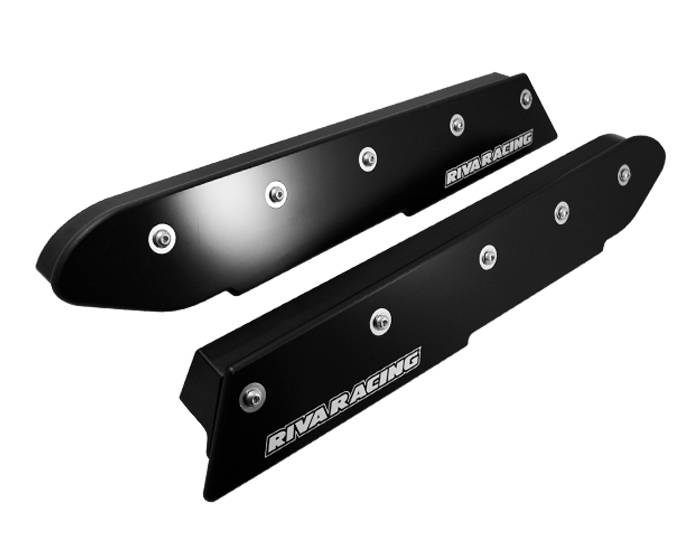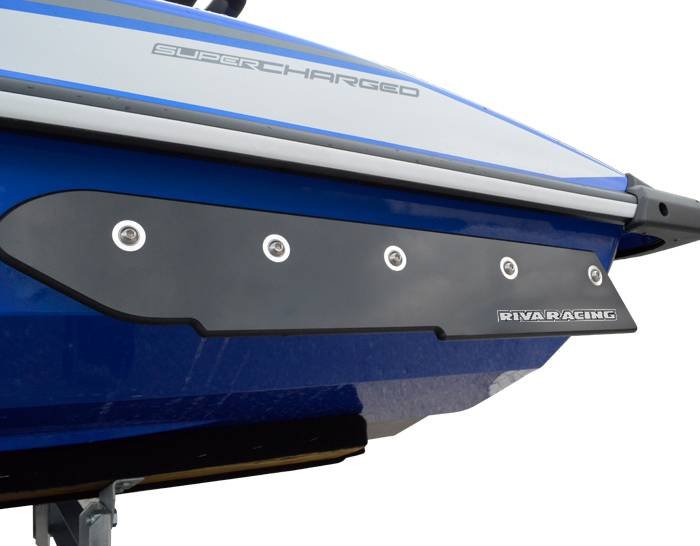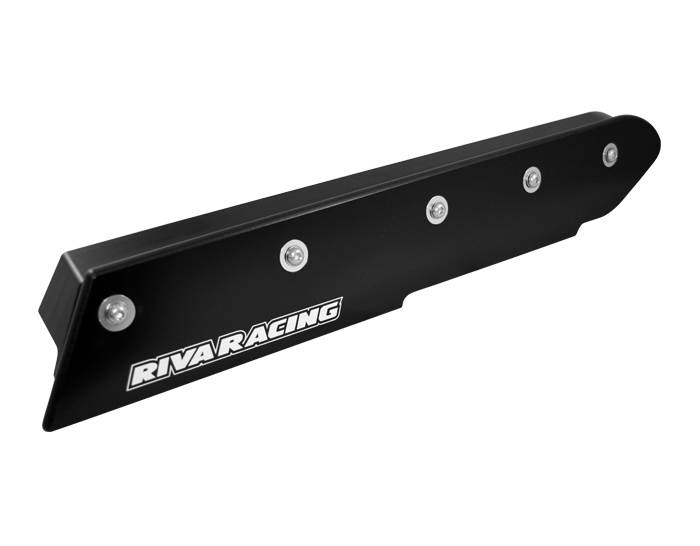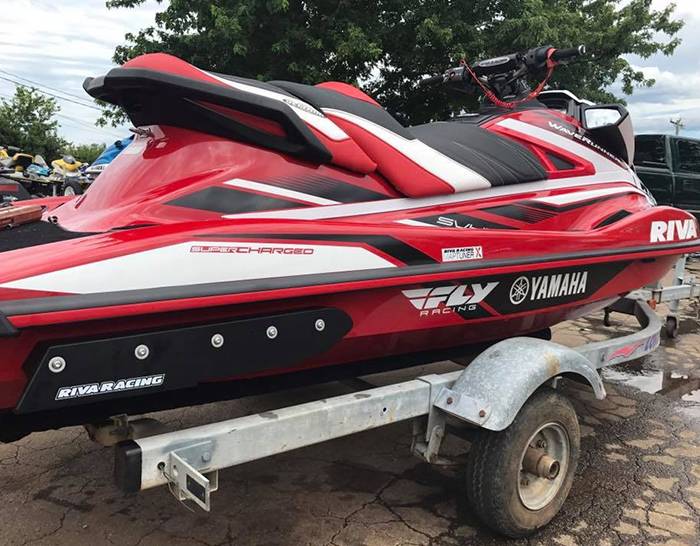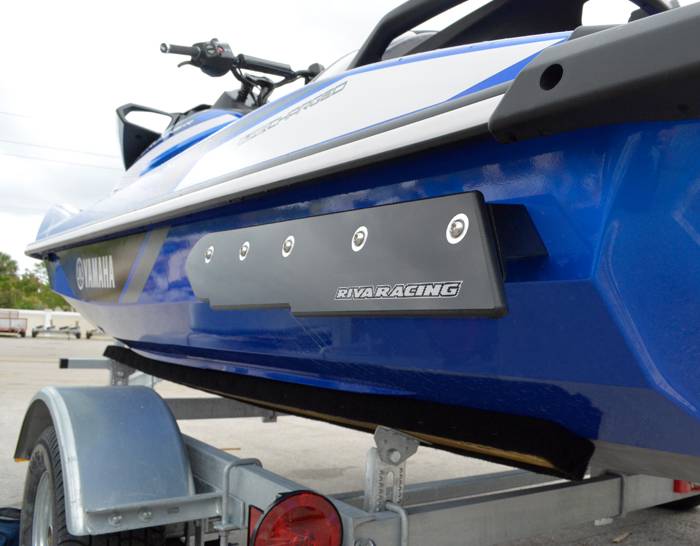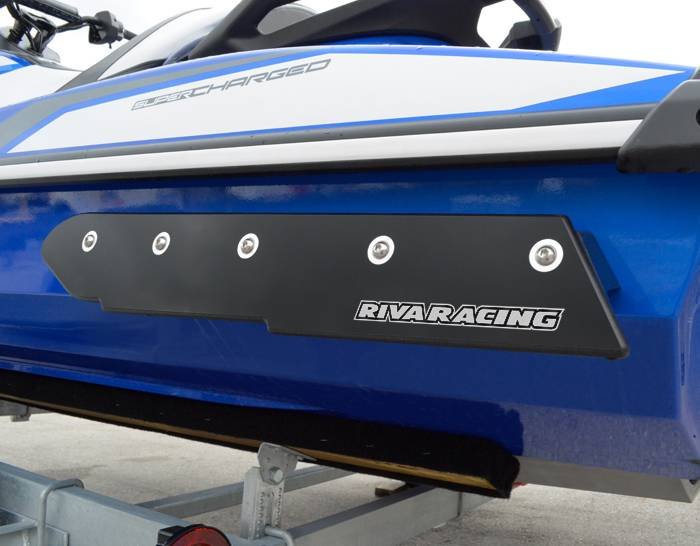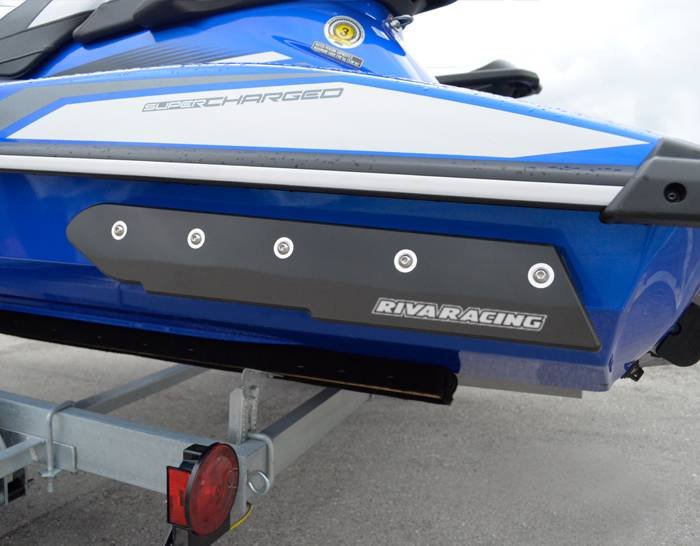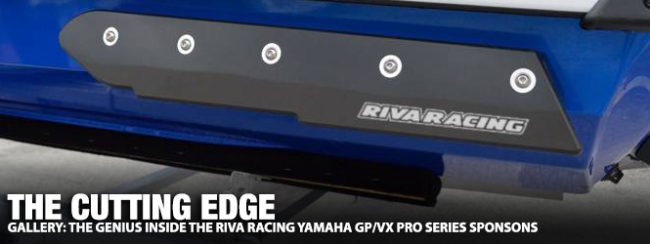
Since the earliest, and admittedly crudest, attempts at drafting a proper sponson for a personal watercraft were first made, the effort to improve upon the design, to achieve a proper compliment to the shape and contours of the hull, and to improve the attitude of the craft itself has rendered marginal results. Over the past 50 years of PWC, the art of hull design has improved with each incoming model, but their accompanying sponsons have fared a far slower evolution, creeping upward from a stabilizing, subsidiary wing jutting from the hull’s sides into an appendage that successfully magnifies the hull’s characteristics.
Gratefully, great leaps have been made in hull and sponson design in the past decade, from both the OE manufacturers and aftermarket – culminating in the pairing of Yamaha’s latest tour de force, the GP1800, and RIVA Racing’s exotic Pro Series Sponsons specifically designed for the GP/VX platform.
“We poured 18 months of research and development into it,” RIVA’s Dave Bamdas told The Watercraft Journal recently, discussing the new GP1800/VXR Pro Series sponson. “It’s an all new design – the blade, backing plate, everything. It’s a specific application that fits the [current] Yamaha GP1800/VXR/VXS/VX hull.” While Bamdas expects the sponsons to be popular among all performance enthusiasts, the design is heavily race influenced.
All of the RIVA team racers – Baldwin, Rius, Francis, Lemoine, Lagapolous, and others – were involved in the development of the prototypes. “They’re all using them now,” Bamdas noted. Replacing the injection-molded single-piece design of the factory sponsons, the Pro-Series Sponsons feature a superior fin and backing plate configuration that mates to the factory mounting position while providing significant influence on the craft’s behavior.
“The backing plate is machined from high-density polyethylene (HDPE),” Bamdas continued. Unlike so many other competitive designs, the Pro-Series backing plate has a unique stepped design, featuring three successive tiers, as well as several complex angles that help the backing plate blend into blade. The unique radius into the fin also accounts for the sponson’s curious “pitched out” design. “We tested for the perfect angle,” Bamdas admitted. RIVA’s use of a polymer over aluminum was purely for weight savings, as the material requires the same time on CNC as aluminum.
Because of the stresses put on the high strength polymer material, RIVA machined large “bulletproof aluminum inserts” for all fasteners. Bamdas reveals that the 3-position adjustable fin itself is “machined from high performance polypropene which is a thermoplastic polymer. The fin also features aluminum inserts to reinforce attachment points”, which also come with all necessary mounting hardware.
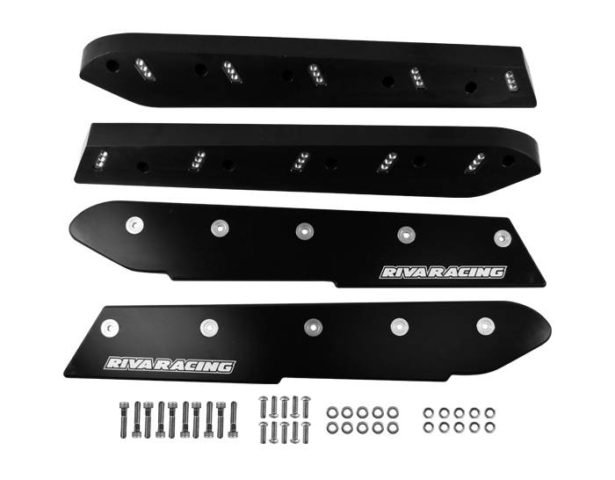
The culmination is a performance sponson that not only improves handling and straight line stability, but dramatically increases control under all conditions – so much so, that Pro Series Sponsons-equipped GP1800s not only held up to rigors of this season’s brutal AquaX tour stop in Daytona Beach, and the brutal 5-to-6 foot cross chop of the LB2CAT (Long Beach-to-Catalina), but took the top spots in both events.
As the Pro Series Sponsors have proven themselves on the race course, Bamdas vows that the fully adjustable three-position fin (when set at the middle position) is not too aggressive for the casual or recreational rider. Rather, he promised that even a moderate rider will noticeably enjoy the added control and the amount of influence they have on the craft. Fatefully, the RIVA Racing Pro Series Sponsons compliment the ride plate and and intake grate RIVA Racing has developed for the GP/VX-based Yamaha WaveRunners, all of which have pushed an already stellar craft into the winner’s circle time and again.





